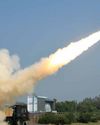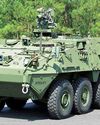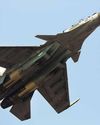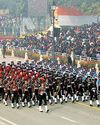
LT GENERAL DUSHYANT SINGH (RETD)
SPIRALING COST OF CONVENTIONAL war calls for non-traditional strategies which are defined as irregular, hybrid, proxy, non-contact, etc., falling under an umbrella term of Grey Zone warfare. A look at rising US war bills drives home this point compelling other nations to resort to grey zone warfare. For example, as per a US study, it has spent $6.4 trillion since 2001 on all wars fought by it. On the other hand, waging a proxy war with non-state actors in the grey zone can cause unacceptable damage at minimum costs. For example, between 1989 to 2002, the government of Jammu and Kashmir (now a Union Territory) spent `3,630 crores (approximate $500 million) on anti-terror operations of which `2,357 crores was reimbursed by the central government (approximate $330 million). Against this Pakistan has spent minuscule both in terms of military and finances to wage a proxy war against India. Disproportionate outcomes, of below the threshold of warfare have encouraged nations to adopt non-military means to achieve their political goals. This form of warfare has led to the phrase “grey zone conflict” which is an overarching term to include cyber, information, hybrid, proxy and threshold warfare, brinkmanship strategies, acts of sabotage, and disruption of essential services.
This unchartered territory that nations have to wade through will lead to realignments and reorganization of global / institutions such as WHO, WTO, UNICEF, and so on. For example as per Rema Nagarajan, the global participation and contribution to WHO has taken a severe beating with US withdrawal following allegations that the DG tried to shield China for its complicity in mismanaging the spread of the virus. This space is a fertile ground for psychological warfare, cyber warfare, and terror war which are essentials of grey zone warfare.
This story is from the {{IssueName}} edition of {{MagazineName}}.
Start your 7-day Magzter GOLD free trial to access thousands of curated premium stories, and 9,000+ magazines and newspapers.
Already a subscriber ? Sign In
This story is from the {{IssueName}} edition of {{MagazineName}}.
Start your 7-day Magzter GOLD free trial to access thousands of curated premium stories, and 9,000+ magazines and newspapers.
Already a subscriber? Sign In

Indigenous Might on Display
INA RAPIDLY EVOLVING global landscape marked by geopolitical tensions and emerging security threats, nations around the world are continuously enhancing their military capabilities to ensure sovereignty and national security.

Future of Battlefield Lethality
A look at the latest trends reshaping Land Warfare Munitions

Indigenous Ammunition Production
Meeting the critical need for ammunition by the Armed Forces requires rapid ramping up of indigenous production

Stryker Production under 'Make in India'?
India explores joint production of Stryker armoured vehicles with the US as part of their Strategic Alliance

Rosoboronexport goes on to work on Technology Partnership Contracts with Friendly Countries
Empowering Global Defence Production through Innovation, Collaboration and Pioneering Technology Partnerships in the evolving landscape of Military Cooperation

Yugoimport - A Global Player in Artillery
Yugoimport-SDPR has constantly innovated itself as a manufacturer of complex weapon systems and defence equipment

Womanpower in Uniform: Republic@75
India takes a big stride into the future as Women Warriors lead the charge in India's 75th Republic Day Celebration

Defending DRDO: Restructure the Responsibilities
A strategic transformation of DRDO is needed to chart a course for excellence in defence technology and a more agile and responsive future

Fighting Terror: Armies in New Urban Warfare
Navigating the realities of Urban Warfare and lessons drawn from the ongoing global fight against terror

Indian Army: In Quest of Greater Firepower and Policy Recommendations for Gaps
Charting the Future under General Manoj Pande's Vision for a Tech-Driven Army, the Indian Army is driving ahead for Next-Gen Combat Capabilities